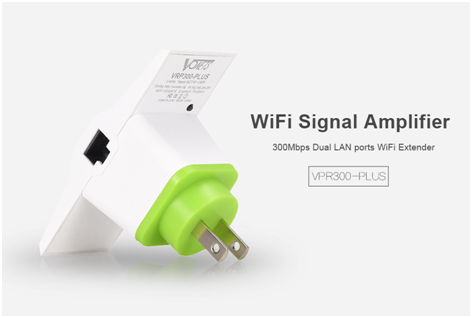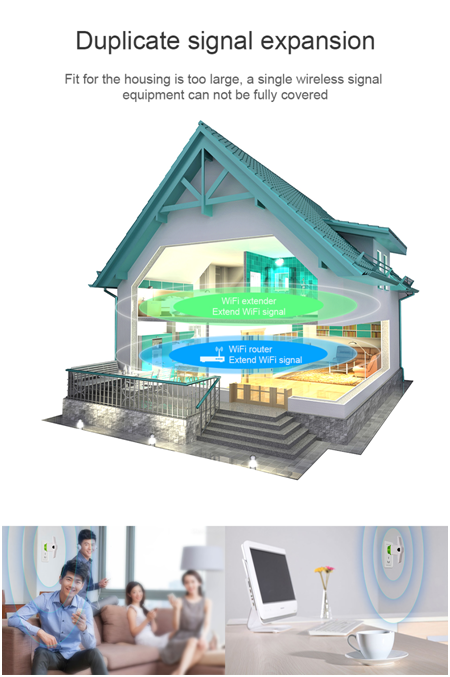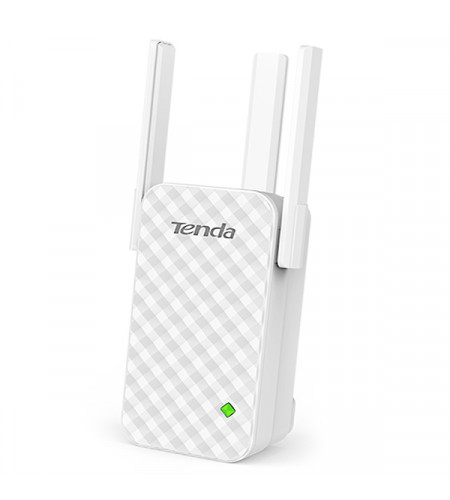With more and more public and retail spaces providing free Wi-Fi, there are always opportunities to connect. One of the more frustrating issues smartphone owners experience is the inability to connect to Wi-Fi successfully. If you're having trouble connecting your phone to Wi-Fi, one of these eight steps should solve the problem. Start with the first step and proceed through the others until you're online!

1. Ensure the Network Is Functioning Properly
Before diving into your phone trying to fix things, make sure the router and wireless network are working. The best way to test the network is to ensure a wireless device can connect to the network at all. See if friends can connect or ask someone nearby if they can connect. If multiple devices can't connect to the network, there is most likely a problem with the router or with the internet service. Also, make sure your phone is getting a stable Wi-Fi signal.
2. Make Sure the Phone's Wi-Fi Antenna Is On
Sometimes small things are overlooked when a phone is causing trouble. Make sure the phone's Wi-Fi antenna is enabled before proceeding to more advanced troubleshooting. Additionally, turning the Wi-Fi antenna off and back on can clear up connection issues. The Wi-Fi on/off toggle button is located in the Settings > Wi-Fi section of most smartphones. If you're connecting to Wi-Fi on an airplane and you've enabled Airplane Mode, you will need to turn your Wi-Fi antenna back on. Entering Airplane Mode turns off the Wi-Fi antenna by default.
3. Verify the Network Name
Always compare the name of the network being connected to with the name of the desired network. It's not uncommon for apartment complexes or public spaces to have a handful of Wi-Fi networks available. These types of networks are often left with similar default names like "ISP-WiFi-123" and "ISP-WiFi-132," making them difficult to tell apart. Two common symptoms of attempting to connect to the wrong network are a password prompt appearing when you don't expect one, or the password you are entering is correct but is not accepted.
4. Double-Check the Wi-Fi Password
Many times, re-reading and re-entering a password will do wonders. Verify the password is correct or double check with a concierge or employee when connecting to hotel Wi-Fi or Wi-Fi in a retail store. Pay special attention to the use of upper- and lower-case characters. On many smartphones, you can view the most recent character entered into a password field. Take your time and verify the password character by character as you enter it.
5. Check for a Splash Screen
Splash screens, sometimes also known as portal screens, are commonly used features of public Wi-Fi networks, especially in restaurants, cafes, and hotels. Splash screens prompt users to accept the terms and conditions of using the public Wi-Fi or they ask for a username and password.
When connecting to public Wi-Fi, a splash screen may open after selecting a network from the list of those available in the nearby area. However, if you navigate away from your Settings app to quickly, the splash screen does not have time to appear, and the connection is canceled. After connecting to a public Wi-Fi network, wait a few seconds to see if a splash screen opens and prompts you to accept terms or to log in.
Alternatively, sometimes a splash screen only opens in the phone's internet browser, like Safari or Chrome. If the splash screen only appears in the browser, other apps like Facebook or Instagram will not be able to connect to the internet until the splash screen has been viewed and completed in the browser.
6. Restart the Phone
Restarting the phone gives it a clean slate and a chance to reconnect to available Wi-Fi networks. Sometimes temporary data can cause issues within the phone's software. Restarting the phone clears these caches of temporary data and allows it to perform operations a little more efficiently. Restarting the phone is a common troubleshooting step for many issues.
7. Update the System Software
Updating the phone's software can bring bug fixes and connectivity improvements. Many of these system updates clear up a host of odds and ends issues, like problems connecting to Wi-Fi. If you haven't updated your software in a while, it may take a little longer.
For iPhone:
- Go to Settings > General > Software Update.
- If there is an update available, select Download and Install.
For Android:
Menu selections may differ from those listed here, but the general screen flow will be the same.
- Go to Settings > About device.
- Select Update or Wireless Update.
For Windows Phone:
Windows automatically updates the system software when new updates become available.
8. Forget the Network and Reconnect
If you are having trouble connecting to a Wi-Fi network that you had previously used, forgetting the network and reconnecting can fix the issue. When a phone "forgets" a network, it deletes any remnants of a connection the phone might keep when attempting to connect to a network. Sometimes a hiccup occurs when a phone tries to connect to a Wi-Fi network and that little glitch repeats on every connection attempt, preventing the phone from connecting.
Use the device-specific instructions for iPhone, Android, and Windows phones listed below to forget a network and reconnect. Forgetting a network deletes the saved Wi-Fi password. Make sure you have access to the Wi-Fi password if one is needed.
iPhone Network Settings
There are two ways to forget network connections on an iPhone: forgetting the network and resetting network settings. If these procedures don't resolve the issue, or you feel uncomfortable performing them, contact Apple Support.
- Go to Settings > Wi-Fi.
- In the Find a Network list, find the desired network.
- Select the blue information icon located to the far right of the network name (it's the 'i' with a circle around it).
- At the top of the information screen, select Forget This Network (if Forget this Network is not listed at the top of the screen, proceed to the Reset All Network Settings troubleshooting option or contact Apple Support).
- From the confirmation screen that opens, select Forget to forget the network.
- Return to the list of Wi-Fi networks and select the desired network, entering a password if one is required.
Resetting all network settings removes all network connections. This should only be done as a last resort and is not recommended for iPhone users who aren't comfortable performing advanced troubleshooting. Resetting network settings deletes all Wi-Fi settings, saved Wi-Fi passwords, VPN configurations, and cellular settings. Make sure you have access to important Wi-Fi passwords and VPN information before proceeding.
- Go to Settings > General > Reset (located at the very bottom).
- Select Reset Network Settings.
- Enter the phone's passcode.
- Select Reset Network Settings from the confirmation prompt. This resets all network settings and restarts the iPhone (select Cancel to cancel out of this option if desired).
- After the phone restarts, go to Settings > Wi-Fi.
- Select the desired network and enter a password if one is required.
Android Network Settings
The Android operating system comes in various versions, depending on the brand and model of phone. If the tips on this page don't solve the issue, refer to the phone manufacturer's website. While menu names may differ slightly, follow the instructions below to forget a network connection. Remember that forgetting a network deletes the saved Wi-Fi password.
- Go to Settings > Wi-Fi.
- Select the network from the list.
- Select Forget.
- From the list of Wi-Fi networks, select the desired network and enter a password if one is required.
Windows Phone Network Settings
If you're familiar with forgetting networks on a Windows computer, this process is very similar. If Wi-Fi connection issues persist, check out the Microsoft Support site for more help and support contact information.
- Go to Start > Settings > Network & Internet > Wi-Fi > Manage Wi-Fi settings.
- Under the Manage known networks list, select the network to be forgotten by the phone.
- Select Forget.
- From the list of Wi-Fi networks, select the desired network, enter a password if one is required.
Contact the Phone Manufacturer
If none of these steps solve the connection issue and you are still unable to connect to Wi-Fi, it's possible something is wrong with the hardware inside the phone. Additionally, if you feel uncomfortable performing any of these troubleshooting steps, always contact the phone's manufacturer before your cellular provider. Cellular providers are experts on the cellular network your phone uses, not phone hardware issues. Phone manufacturers are the experts on their devices and have service channels set up to help customers dealing with a wide range of issues.
Vonets VRP300 - PLUS Dual LAN Ports WiFi Signal Amplifier Repeater
Details
Main Features:
● Supports WiFi repeater mode and bridge mode.
● Supports 110 - 240V power supply.
● With 2 self-adaptive 10 / 100M LAN ports.
● Supports 64/128/WEP encryption, WPA-PSK/WPA2-PSK, WPA/WPA2 security mechanism.
● Adopts advanced 802.11n WiFi technology 300Mbps WiFi transmission rate.
● The original D/A temperature compensated auto frequency control technology (TAFC) makes sure the lasting stability and the WiFi signal is not dropped.
● Good compatibility, almost compatible with all of the smartphone, tablet computer, notebook and WiFi devices.Brand: VONETS
Model: VRP300 - PLUS
Type: Amplifier,Repeater
Interface: LAN
Router Connectivity Type: Ethernet
Transmission Rate: 300Mbps
Speed of Ethernet Port: 100Mbps
Network Protocols: IEEE 802.11b,IEEE 802.11g,IEEE 802.11n
Wireless Standard: Wireless N
Wireless Security: 64/128 Bit WEP,WPA,WPA-PSK,WPA2,WPA2 Encryption,WPA2-PSK
Wireless Data Rates: 300M
WiFi Distance : 100m no obstacle
LAN Ports: 2 ports
Max. LAN Data Rate: 100MbpsFreq: 100Hz - 16KHz
DC Port: No
Gain dBi: 2dBi
Quantity of Antenna: 2
Working Voltage: 110 - 240V
Language: EnglishPackage weight: 0.148 kg
Product size: 9.00 x 8.20 x 4.00 cm / 3.54 x 3.23 x 1.57 inches
Package size: 13.00 x 11.00 x 5.50 cm / 5.12 x 4.33 x 2.17 inchesPacking List: 1 x 300Mbps Dual LAN Ports WiFi Signal Amplifier Repeater


view more : http://www.cutebuy.com



